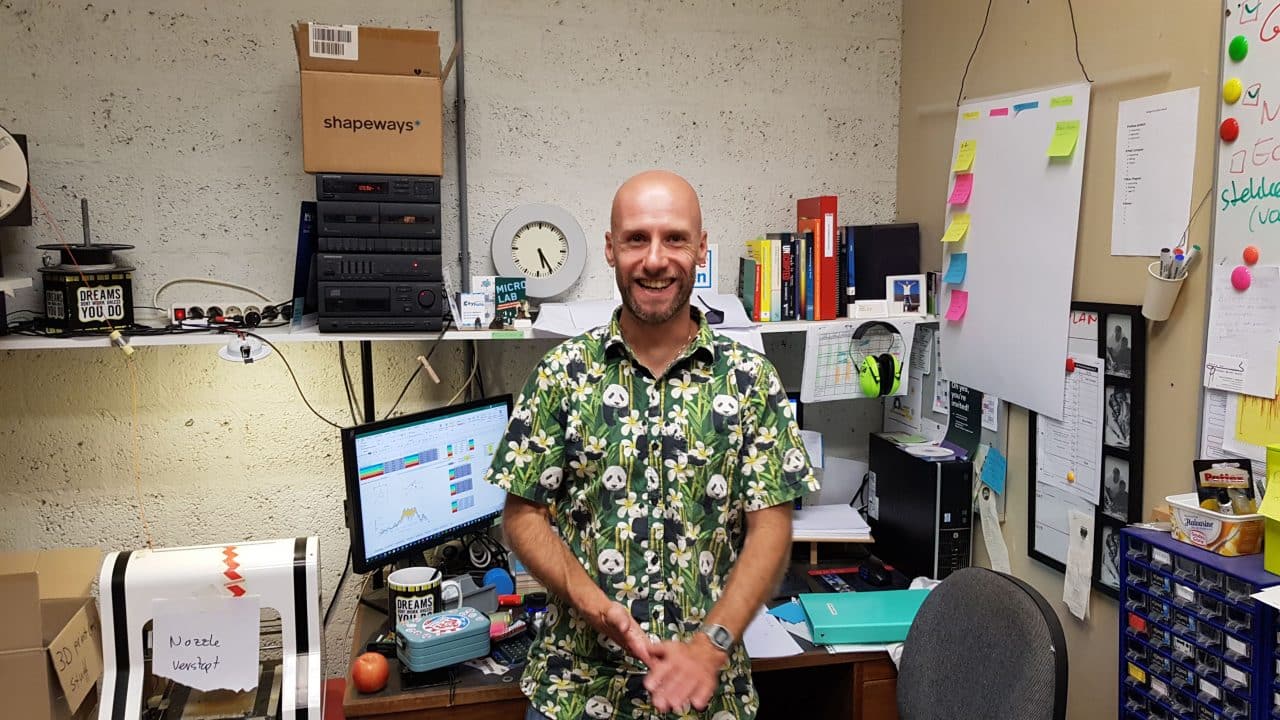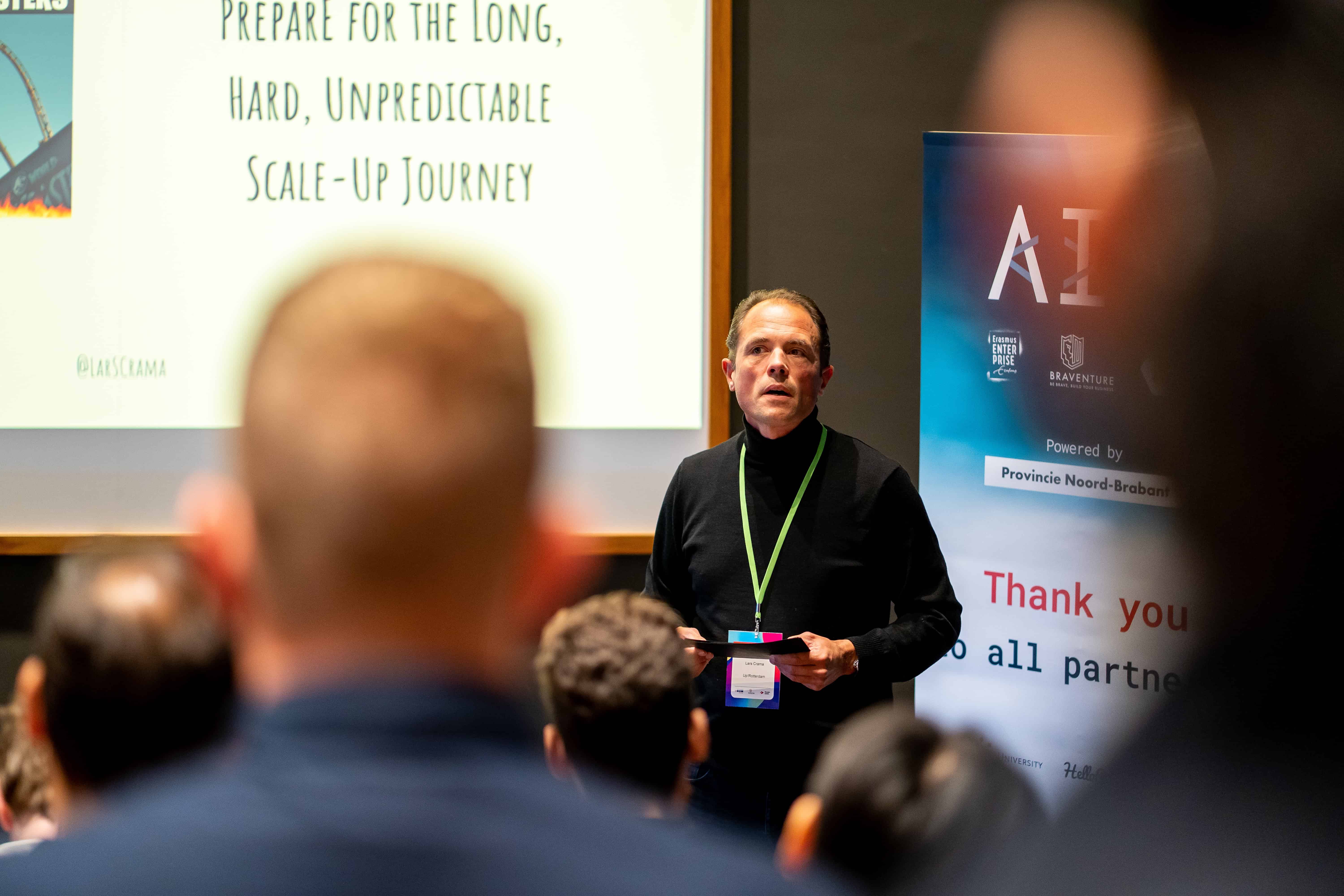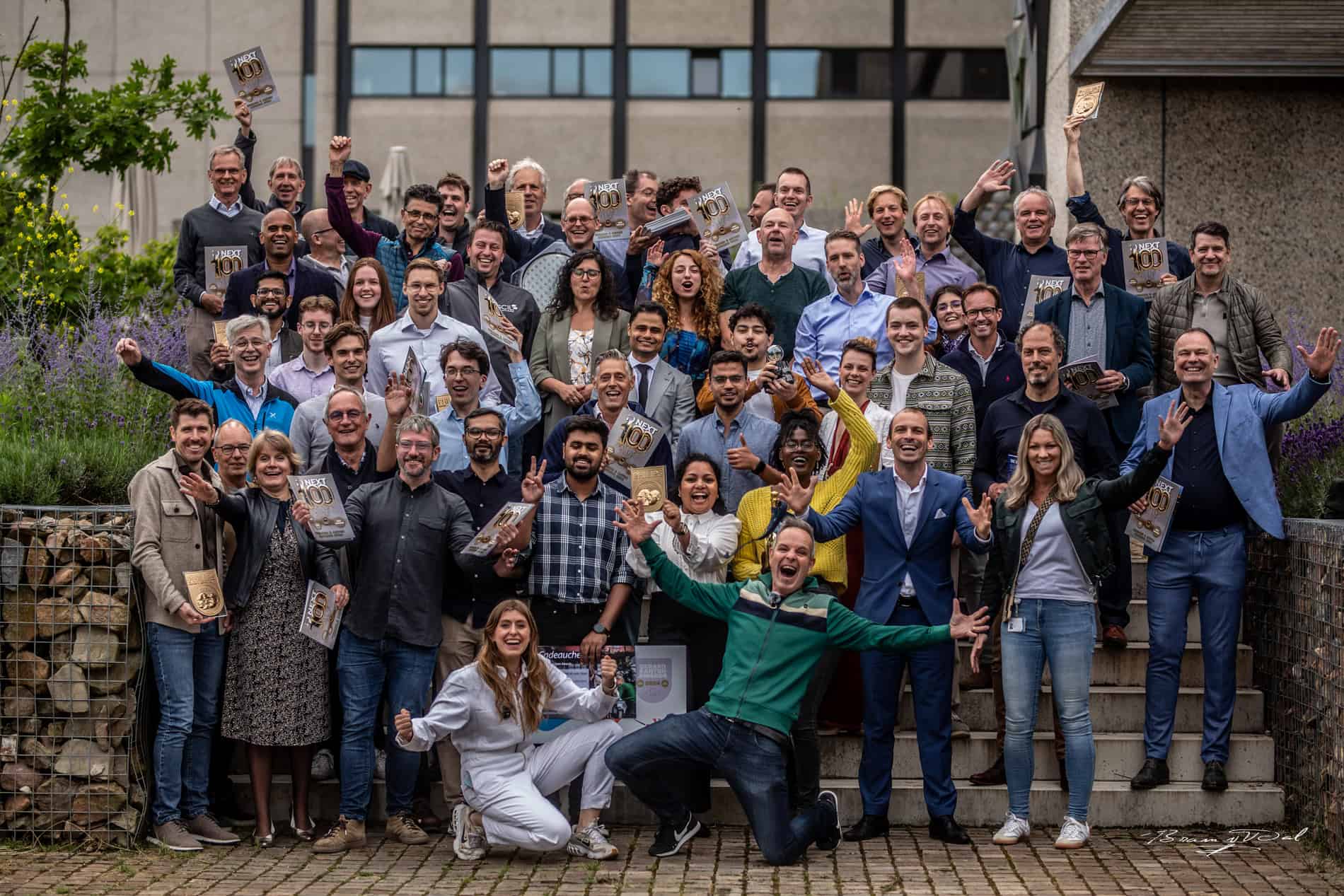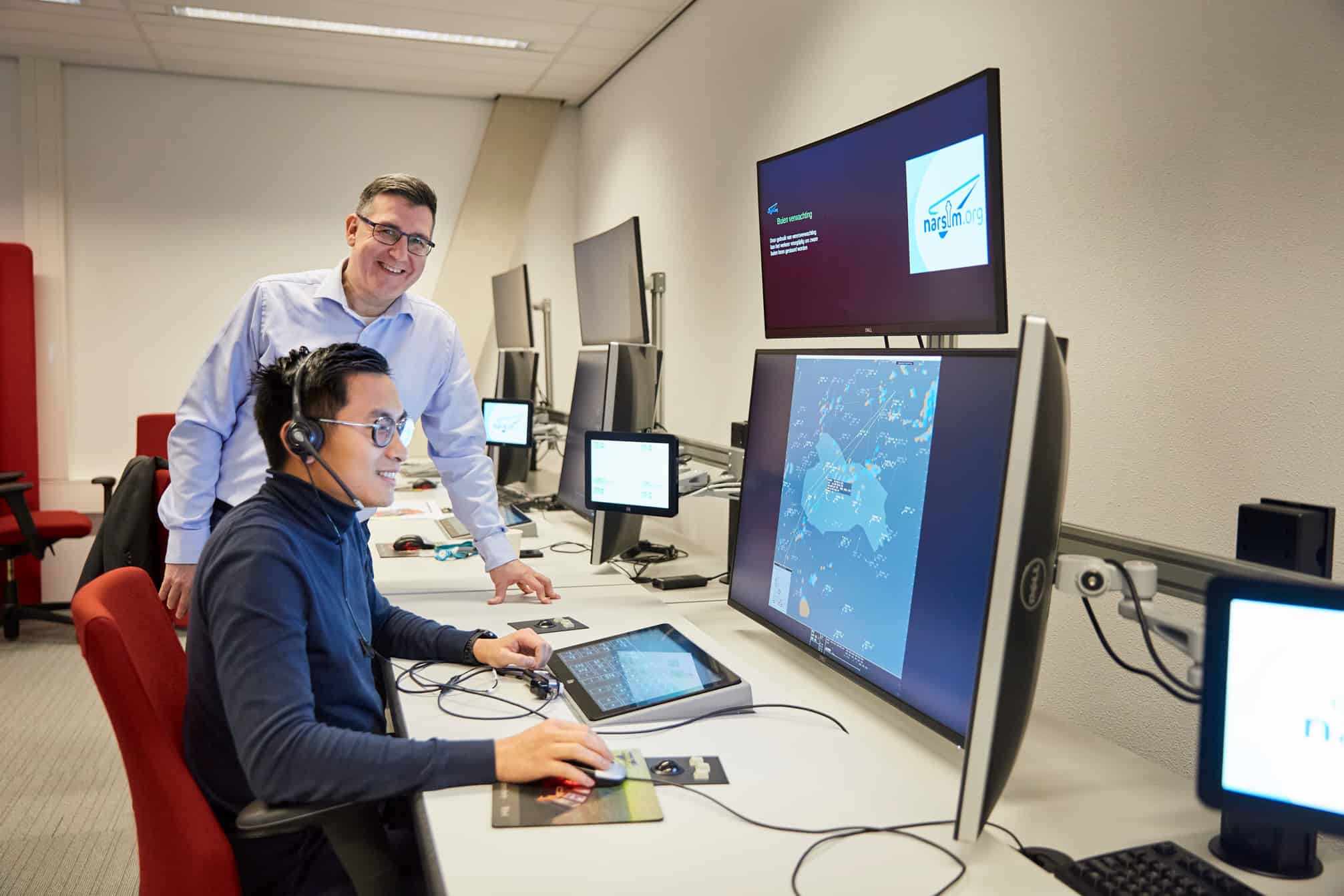
The career path of Hans Vullers has not ever gone in a single straight line. More a case of 12 trades, 13 accidents, with occasional swerves to the side that frequently changed his path into a bewildering, winding route. But despite all of that commotion, one goal persisted: to make an essential contribution to the world which makes it greener, more beautiful and better. Previously, in 2006, this resulted in an attempt to build something himself: a company, a windmill. But the circumstances were not yet what they ought to have been, so attempt Nr. 1 floundered. Now 14 years later and after a life full of trial and error, Vullers is determined to make something of life, this time with R-Energy.
The core of Vullers’ mission is three-fold: he wants to make people aware of the seriousness of the world’s situation, he wants to contribute something towards solving this and last but not least, he is aiming to provide ” enjoyable and socially responsible work” for himself and his employees. The way that this is now taking shape is with an ‘urban turbine’ which is able to harness solar and wind energy in an urban environment and for direct usage by the people living in the same vicinity. As Vullers says, this is possible because the machine is able to catch even the slightest breeze, no matter which direction it comes from and however changeable the weather may be.
Half a bike and a washing machine
Vullers recounts his story in his workshop – a jam-packed space of about 2 by 5 meters in Eindhoven’s Microlab. All around him we hear sawing, drilling and hammering from the other studios as this is the heart of the Eindhoven makers scene. In the back of his workshop is a computer on which 3d models of his dream are revolving. The computer is surrounded by screws, pictures, pens, tape, a 3d-printer (along with a note “nozzle hidden”), and lots of papers with calculations and graphics. Next to his keyboard is a folder containing the step-by-step progress he has recently made with his first prototype. The floor is covered with so many materials that only a small walkway remains. Everywhere there are parts that might at some point come in handy: half-bikes, a large parasol, construction plates and a large-sized washing machine drum (“that’s for another project – I want to make a barbecue out of it which heats up water for the dishes afterwards.”) The walls are also full of useful information. Vullers points to a bar graph which shows the average temperatures since the eighteenth century. The peaks of the last 10 to 20 years leap out at you. “The facts are so clear and yet we somehow don’t want to see them. We are lulled to sleep by our luxury life, the high salaries, the ease of our existence. As a result, we have lost sight of the seriousness of the situation and we don’t even appreciate anymore how easy it actually is to do something about it.”

Vullers warned us beforehand that he sometimes loses the thread of what he is saying, because he always wants to talk about everything and by doing s0, sometimes mixes up the details and his key points. During the conversation there is hardly any noticeable evidence of this: he is sharp, focused. However, this probably has everything to do with his preparation. He regularly leafs through a package of about 10 A4’s containing the main business outlines of what he wants to say. Yet private circumstances appear to be at least as crucial to Vullers’ decision-making as his intrinsic drive and his training as a mechanical engineer are. Two moments stand out: a two-month treatment in South Africa that ended his longstanding addiction and the sudden death of his younger brother.
“These events made me realize that I have no other choice. I have to do it. For my children, for my little brother, this is why I got cleaned up. We live in an age of waste, if there is anything I can do to prevent my children from coming to me later – when the tide is literally up to their shoulders – asking me what I had done to prevent it, then it is time to do something about it now.”
Nevertheless, before a wrong impression might be made, Vullers warns against his own words: “It’s not a negative motive, I do this because I am able to do it and I like it. I also know that the real solutions to the world’s problems cannot come from me alone; they are far more politically determined. Despite this, we can do a lot ourselves, anyone can do it! Yet people allow themselves to be consciously or unconsciously held in check. And I understand that too by the way; just step away from those high wages and luxury cafeterias. Prosperity quickly grows on you, but it’s a lot harder to surrender it.”
Autism
One last nudge in the right direction was given to Vullers during another episode of sick leave, when he was officially diagnosed as being on the autism spectrum. “Funnily enough, that moment felt liberating – I had officially passed the autism exam!” Vullers registered his dream with the Chamber of Commerce, rented a space at Microlab and amidst dozens of other tinkerers in the finest Eindhoven tradition, just got started. It will be some time before the result of his endeavors will provide a stable source of income for the Vullers’ family, but until then he will make sure that there is at least some bread and butter on the table via a variety of part-time jobs.
In the meantime,he has gathered around him a group of about eight employees thanks to his infectious enthusiasm. Some of them are more involved than others, but all of them work on parts of Vullers’ machine. Fontys students are also working with him on a regular basis. “It is striking that all but one of the people around me are foreigners. Apparently, the Dutch are a bit more cautious. Probably it has everything to do with how good we have it here. Well, who else would put their energy into a project with an uncertain outcome?”
How does the R-Energy method work?

“We are developing an ‘urban turbine’, a machine that uses wind and sun in order to generate sustainable energy in the built-up environment. We are certainly not the only ones. For example, the model that Ibis Power created is beautiful. But our concept is different on a number of points. We harness gusts of wind and low velocities as well, which is not the case with most of the conventional systems. The majority of companies always tell us how successful they are when it comes to a good average wind speed. But these are not realistic in practice. That is why the smaller wind turbines are always written off as unprofitable in studies. That’s quite different for us. Aside from that, we are able to adapt the product per location to the specific needs of that location. The device is ultimately the size of a car or a small van, because in order to be able to harness the wind properly, you really need to have a certain amount of size. Our system is built so that it can harness wind from all sides, which is very useful in urban environments where the wind often changes direction rather quickly. By adding an extra ramp where the wind enters, we increase the concentration, so that even light gusts of wind are still of value. The solar panels are also capable of rotating with the rotation of the earth, so that the yield is maximized there too. At the moment, we are working with prototypes that we are testing here and there and we are using our theoretical studies in order to determine which positions will have the most effect. Our models have already been designed for places such as the Philips stadium, the town hall square and various flats in the Eindhoven city center.”
What is the motivation behind the development of this system?

“As I said, it’s at least as much about convincing others that we have to do something to make the world a more sustainable place, as it is about the product itself. I am not ruling out the possibility that after this project I might do something completely different, for example with water or something to do with the food supply. But it will always be something that contributes to a better world and I will always try to convince others of my vision. Practice what you preach people sometimes say. Yet it is the other way around for me: preach what you practice.”
What is the main challenge for R-Energy?
“There are still quite a few, although when it comes to the technical part, as a mechanical engineer I’m quite confident. The challenge has more to do with the business side: finding finance for further development, finding customers, but also personnel with knowledge in this area. Anybody with good ideas can always contact me at: info@r-energy.biz …”
Has there ever been a moment when you felt like giving up?

“No, I’m so convinced that this is the way we have to go, that those kinds of moments just don’t happen. The more you read about the state of our earth and the more you learn about it, the more difficult it becomes to think about how we can find a solution for it. Not that the solution itself is complicated – if we are able to have all that oil from Saudi Arabia come this way, then surely it should also be possible to fill the Sahara with solar panels and to spread that energy all over the world? – Yet you see time and again that humankind does not in any way want to face the seriousness of these issues nor the obvious solutions. Although these moments of dispair disappear in no time when I’m working with my staff on this project. And I actually do live to make it happen, don’t I now?”
What was the most rewarding moment for you?
“There are too many to mention, but one single moment does stand out. That was when I had a very first prototype of a wind turbine with a small light on it on top of the roof at home. I was working in my shed one evening when I suddenly saw that light on my roof. That’s when I knew: I can just build it, I am an energy producer!”
What can we expect from R-Energy in the coming years?
“Soon Ecovillage Boekel will receive the premiere of our urban turbine. An initial pilot model will be installed there and then we will be able to see how it all works ‘in real life’. Actually, it is taking far too long for me, although Boekel’s cooperation is enormous – so I’m really looking forward to it. We will decide on our next steps depending on the results there, but it is certain that we are going to continue improving the concept. Aside from this, we will come up with other solutions, for example, with regard to conserving water.”
Are you interested in start-ups with solutions to the problems of our time? An overview of all our articles on this subject can be found here.








